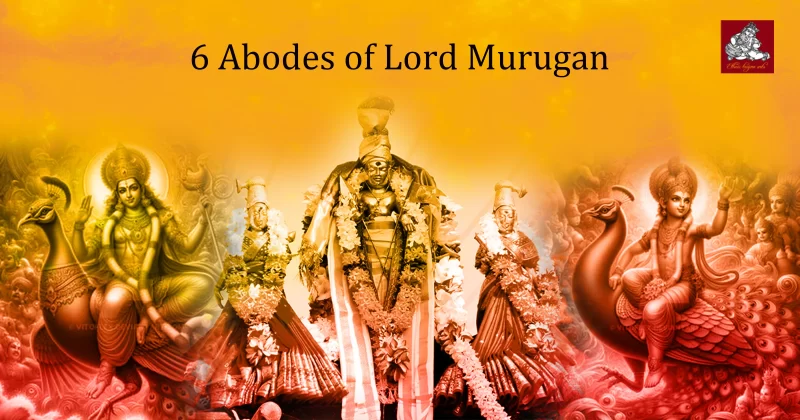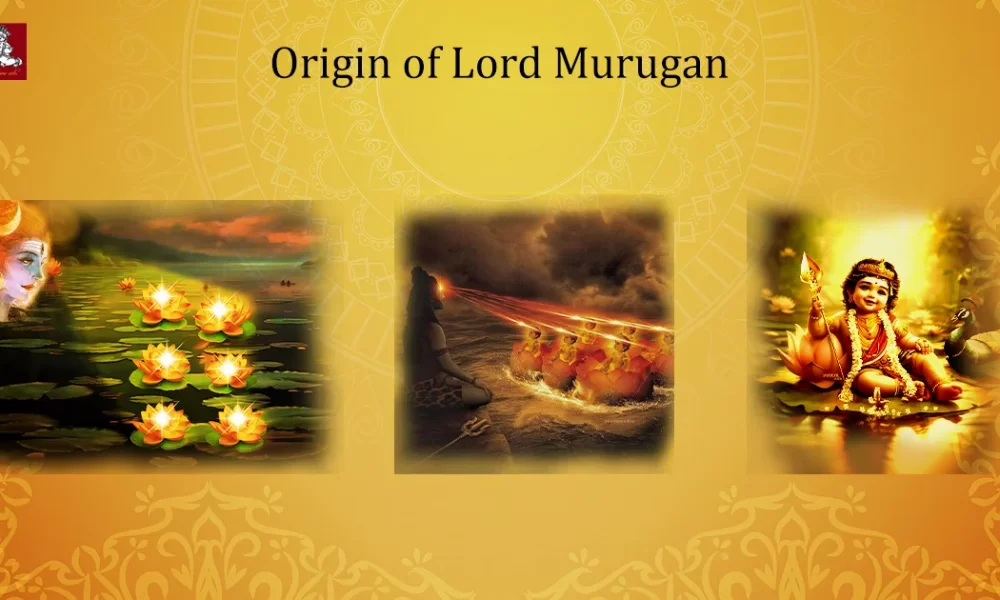He is the epitome of bravery.
He is the Lord of the Six Holy Hills.
He is Vetri Vel Murugan.
Son of the supreme deity Shiva and the Benevolent Goddess Parvati and the little brother of the intellectual Ganesha, he is called by many names. Skanda, Dandapani, Karthikeya, Shanmukha, Kumara, and the list goes on and on.
Lord Murugan was the army general of the Devas, who fought with bravery and won the battles. He also killed the asuras Anamugan, Panumugan, Simhamugan, and Surapadman by beheading them with his holy spear, vel.
Famously known as Arupadai Veedu, Lord Murugan blesses his deities from six hills situated at various places in Tamil Nadu. Each temple sings his glory and is the house of divine stories of the six-faced Lord.
Today, let’s learn more about the specialty of each abode of Lord Murugan.
Thiruparankundram – The first abode of Lord Murugan
Arulmigu Murugan Temple, Thiruparankundram, is known as the “First House of Murugan.” It is also the holy place where Lord Murugan married his consort Deivanai after slaying the asuran, Surapadman. The cave temple, located 8 kilometers from Madurai, was built by the Pandya king Maravarman Sundara Pandiyan in the 8th century.
As legend goes, Lord Murugan worshipped his father, Lord Shiva, in Thiruparankundram as Parangirinathar.
Thiruchendur – The second abode of Lord Murugan
The Subramaniya Swamy Temple, or Thiruchendur Murugan Kovil, situated in the Thoothukudi district, lies 60 km southeast of Thirunelveli. Unlike other temples, which are on hills, the temple is built on the shores of the Bay of Bengal.
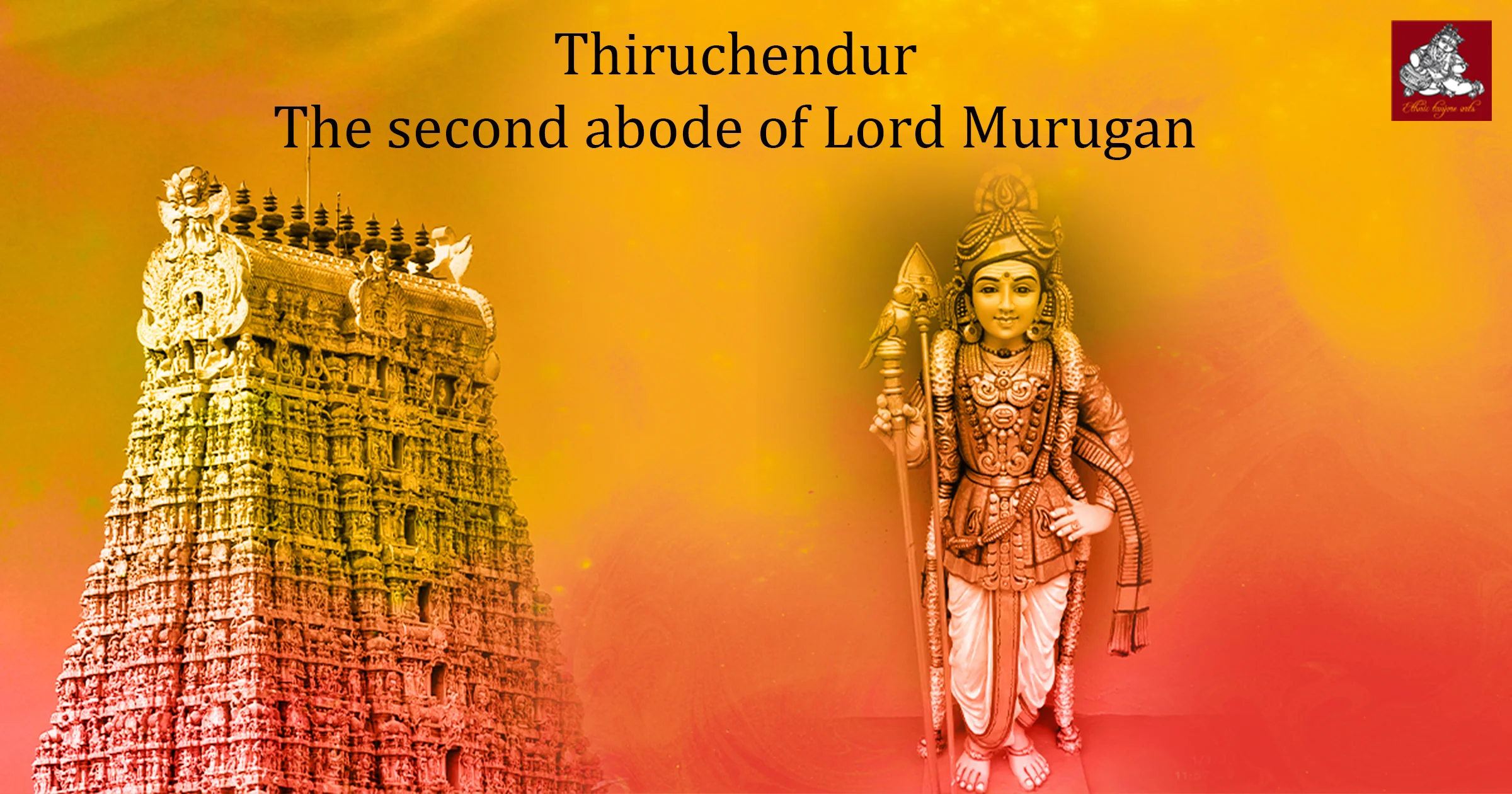
As the legend goes, Lord Murugan fought the battle against Surapadman in Thiruchendur, where he killed all the sons of the demon. In fear of losing, Surapadman hid under the sea, and Lord Murugan split him into two pieces; one is now believed to be the rooster flag that Lord Murugan holds, and the other part is the peacock.
Palani – The third abode of Lord Murugan
Arulmigu Dhandayuthapani Swamy Temple, located in the city of Palani, is encompassed by the Dindigul district, 100 kilometers southeast of Coimbatore. Famously known as Thiruaavinankudi in Sangam literature, Palani Murugan Temple, alongside steps and sliding elephant steps, the temple has a rope car and winch for the commute up the hill.
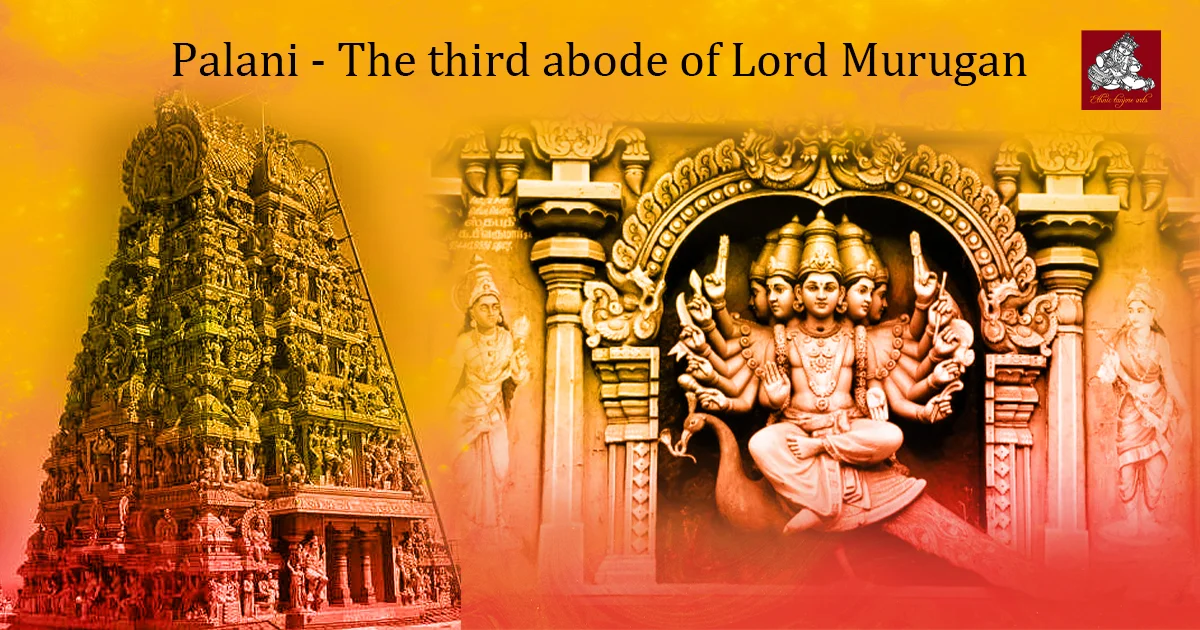
The legend goes that once Sage Narashar visited the celestial abode of Lord Shiva and presented the Gnana Palam (fruit of knowledge). Lord Shiva wished to divide the fruit into two halves for his two sons, but the sage interrupted and suggested that the fruit be awarded to the one who wins the competition. The competition was to test who would encircle the world the fastest, three times. Lord Kumaran sat on his mount and started his journey. However, Lord Ganesha encircled Lord Shiva and Parvati, as he considered his parents to be his entire world.
Pleased by Lord Ganesha, Lord Shiva presented him with the fruit. Upon his arrival from encircling the world, Lord Murugan was angered by unfair competition, and in his divine anger, he came to Palani. He discarded all his robes and ornaments and meditated to let go of his boyhood and know more about himself.
Swamimalai – The fourth abode of Lord Murugan
Nestled in the midst of the Thanjavur district, Swamimalai Kovil lies on the banks of the river Kaveri. The temple was built by King Parantaka Chola I in the 2nd century BC. To look at his divine face in the form of Balamurugan, one has to climb 60 steps and reach the Swamimalai Swaminathaswamy Temple.
The temple is the holy site where Lord Murugan explained the meaning of the Pranava Mantra (Om) to his father, Lord Shiva. Hence the name Swaminathan or Tagapan Swami, since the son became the Guru and the father became Shishya.
Another unique element of the temple is that, here, Lord Murugan has the elephant Airavata as his vaganam (vehicle), gifted by Lord Indra in the place of his peacock, Paravani.
Thiruthani – The Fifth Abode of Lord Murugan
Situated on the hills of Tiruttani, Tiruvallur district, approximately 87 kilometers from Chennai and 700 feet above sea level, Lord Murugan is in the form of Subramaniya Swami. One has to climb 365 steps, indicating the 365 days in a year, to get sight of Lord Murugan.
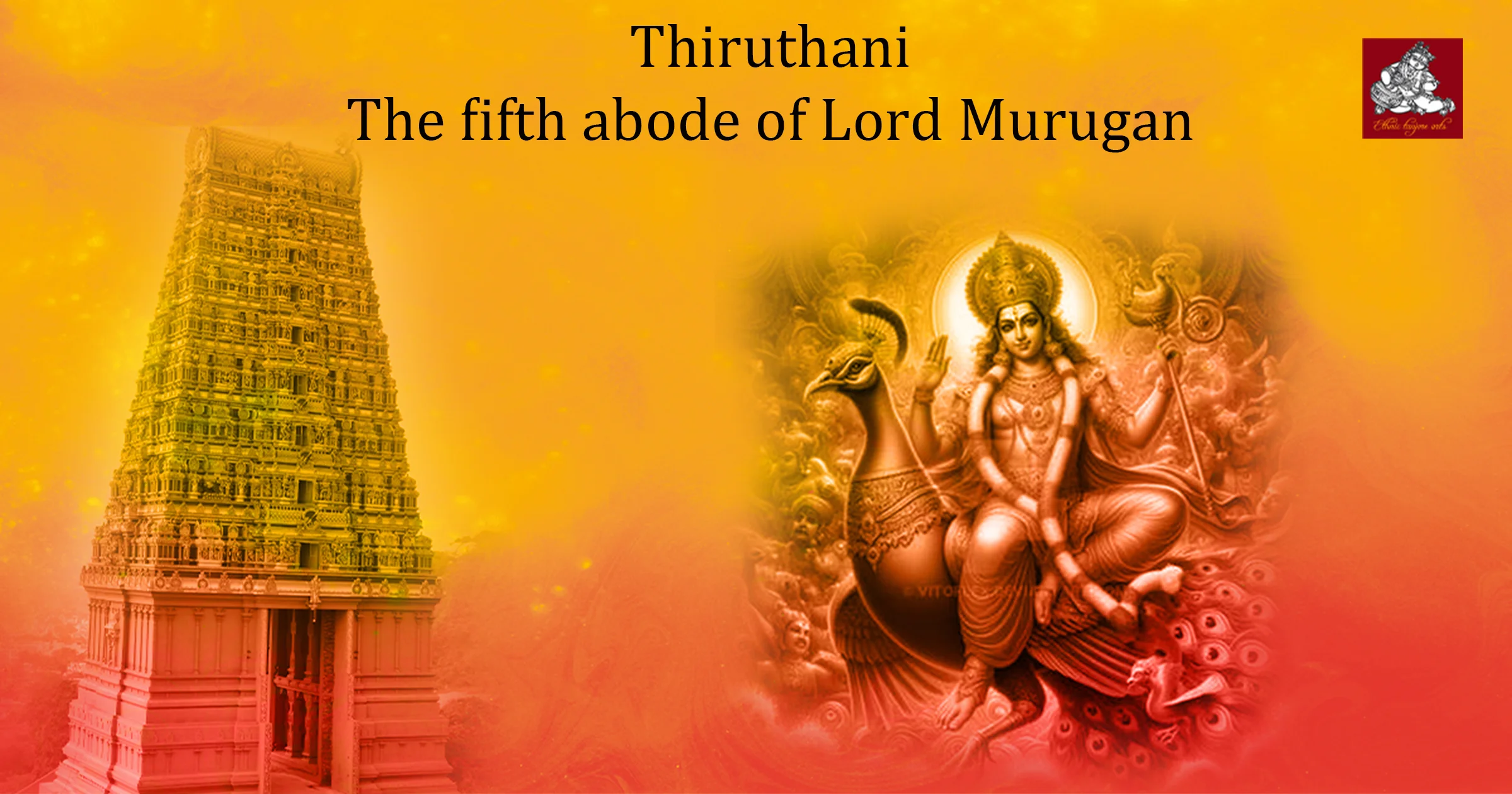
It is said that Lord Murugan came to Tiruttani after killing Tarakasuran to subdue his anger.
As the legend goes, after Murugan’s marriage to Indra’s daughter, Deivanai, Lord Indra gifted his elephant, Airavata. As Airavata left with Murugan, Indra started noticing the waning of his wealth. Lord Murugan insisted on returning the elephant, but Indra strongly refused and only asked for the elephant to face in his direction. Hence, the elephant faces east in the temple and not Lord Murugan.
Pazhamudircholai – The sixth abode of Lord Murugan
Located about 25 kilometers from Madurai, the Arulmigu Solaimalai Murugan Temple stands atop a dense forest. It is believed to be the adobe of Goddess Valli. Lord Murugan is worshipped here as Kurinji Nilam Kizhavan. It is the only temple among the Arupadai Veedu where Lord Murugan is worshipped along with his consorts Valli and Deivanai.
Lord Murugan’s Vel, which was crafted by Goddess Parvati, is worshipped as the presiding deity.
As the legend goes, Pazhamudircholai is believed to be the place where Lord Murgan saw and tested Avvaiyar.
Conclusion
The six houses of Lord Murugan, Arupadai Veedu, literally translates to “six battle houses,” are holy pilgrimage spots where thousands of devotees go and seek the blessings of Lord Skanda, who is divine, youthful, and the greatest warrior of the three worlds.
Bring him to your home in the form of Lord Murugan Tanjore paintings, sketched with vivid colors, 22-carat gold, and precious stones that shine as bright as the Lord himself.
We, Ethnic Tanjore Arts were created with the vision of aiding and promoting the interests of hundreds of artists who are confined to practicing their craft from their homes and rural regions.
So, buy a Tanjore painting of Lord Murugan and bring home victories.
Vetrivel Muruganukku. Arogara!!

